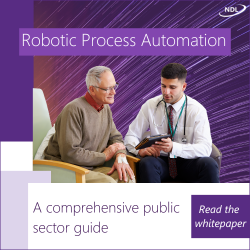
Plans have been unveiled to integrate the Police National Database (PND) and Passport Office data with other national Government databases to enable police to find a facial match with the 'click of one button'.
Crime and policing minister Chris Philp used a fringe meeting at the Conservative Party conference in Manchester to say that he will be asking the police to check facial images captured during a crime against the Home Office’s passport and immigration records. If that goes ahead, that means a database of 45 to 50 million images could be used to help catch shoplifters, burglars, car and bike thieves under plans to tackle crime.
But that’s not all: Philp is reported as telling delegates that data from the police national database (PND), HM Passport Office would be “integrated” with other national Government databases to enable police to find a match with the “click of one button”.
Another data source would be the immigration and asylum biometrics system so that foreign nationals who are not on the passport database could be searched for. Under the plan, video of suspected crime from CCTV, doorbell and dashcam technology would be compared against facial images to find a match.
The Minister also promised to have such a unified system up and running within two years and predicted it would be a “gamechanger for catching thieves”.
Currently police forces only run facial recognition software through the PND but that only holds information on people who have been arrested. While they currently have access to the passport database, forces are not using it to find criminals as it sits on a separate IT system.
Philp is also reported to have said that in the short term he wants police forces to start running footage of crime scenes through the separate passport system while the new combined database is created.
The move is not totally unexpected, though its ambition is. In August, for example, The Home Office announced a Market Exploration exercise seeking technologies for the use of facial recognition within policing and other security stakeholders, with an aim to “find capabilities that could be deployed to benefit the Home Office and Policing and within the next 18 months”.
We also reported last month on Philp’s speech to the Police Superintendents’ Association conference, where the Minister said wider use of facial recognition technology could an play an important role in tackling low level crimes such as shoplifting and other anti-social behaviour that have a strong effect on perceptions around public safety.
But the plans are expected to spark opposition from a range of privacy advocates. Already, Big Brother Watch has come out strongly against: “[The Minister’s] plan to subvert Brits’ passport photos into a giant police database is Orwellian and a gross violation of British privacy principles. It means that over 45 million of us with passports who gave our images for travel purposes will, without any kind of consent or the ability to object, be part of secret police line-ups.
“To scan the population’s photos with highly inaccurate facial recognition technology and treat us like suspects is an outrageous assault on our privacy that totally overlooks the real reasons for shoplifting. Philp should concentrate on fixing broken policing rather than building an automated surveillance state. “We will look at every possible avenue to challenge this Orwellian nightmare.”
Worth noting that the public may be more on-side with the plans than such campaigners believe—with a live poll on the Times's website running at 79% in favour of ‘Should police get access to passport database for facial recognition scans?’ as of us going to press.





